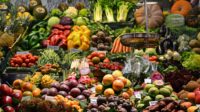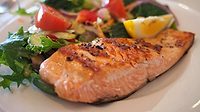Market Research
Bakeries to Record Significant Consumption of Dietary Fibers Amid Rising Preference for Fruit and Vegetable-Sourced Ingredients

Photo by Iñigo De la Maza on Unsplash
In the last few decades, the importance of healthy diets has substantially increased because they are not only vital for good nutrition, but they also render protection against multiple chronic non-communicable diseases. This paradigm shift of consumers toward incorporating healthy meals in daily regimes is playing a key role in the development of the dietary fibers market.
According to the CDC (Centers for Disease Control and Prevention) 2022 National Diabetes Statistics Report, more than 130 million adults living in the U.S. are diagnosed with diabetes or prediabetes. This rising risk associated with diabetes, lately, has urged the intake of high-fiber diets to reduce the high spikes in blood sugar and increase the insulin sensitivity of peripheral glucose-utilizing tissues.
In fact, the burgeoning burden of breast cancer has also steered the early intake of fiber-rich food ingredients to deliver a higher level of protection. Dietary fibers are the indigestible part of plants, including fruit, vegetables, nuts, grains, seeds and legumes. One of their most important applications assisting in the treatment of constipation to add bulk to the stools and promote healthy bacteria growth in the bowel while acting as a sponge to absorb the fluid to soften the stools.
The growth of the dietary fibers industry is also supported by rising application scope in a plethora of industries to cater to increasing consumer health requirements. For instance, in November 2021, Kerry introduced Emulgold Fiber, a naturally sourced and soluble dietary fiber ingredient to cater to the white bread manufacturing market.
Lately, the adoption of dietary fibers has also increased in animal feed to provide enhanced assimilation of nutrients and optimal intestinal health. This is mainly because the fibers play a pivotal role in the complex interaction between the endogenous enzymes, the diet, the commensal microflora and the mucosa of the animals.
"Propelled by numerous product benefits, such as controlled blood sugar and reduced glycemic levels, the dietary fibers market size will exceed $12 billion in annual remuneration by 2026, according to Global Market Insights Inc."
Rising Presence in the Bakery Sector to Drive the Demand for Insoluble Dietary Fibers
Of late, the acceptance of insoluble dietary fibers is on a significant rise, mainly driven by abundant access as they are easily found in the seeds as well as skins of fruit and whole-wheat bread and brown rice. This type of fiber is well known for its assistance in weight loss as it promotes the movement of materials through the digestive system. Wheat bran, beans, nuts and vegetables, such as green beans, potatoes and cauliflower, are other good sources of insoluble fiber.
These dietary fibers are also largely favored as they help improve various bowel-related health problems, comprising hemorrhoids, constipation and fecal incontinence. In light of their growing health prominence, they are becoming more significant in the bakery and snacks industry. To illustrate, in June 2020, Ingredion Incorporated introduced NOVELOSE 3490, a new dietary fiber in the U.S. This new ingredient assists food manufacturers in developing high-fiber bakery and snack products to help support the digestive wellness of consumers.
Dietary Fibers Industry to Gain Traction from Fruit and Vegetable Sources
Considering the presence of a well-balanced ratio of both the insoluble and soluble fractions, fruits and vegetables have emerged increasingly popular as important sources of dietary fibers. Lately, green peas, artichokes, collard greens, parsnips, broccoli, carrots and spinach are incorporated into multiple diets given their high fiber content. Dietary fibers obtained from these plant-based food sources boast attributes that are associated with good physiological and functional health.
The huge quantities of byproducts from food processing industries that include pomace, stem and seeds among others are also turning out to be good sources of dietary fibers as they are largely used for the manufacturing of various functional ingredients. In July 2022, Ingredion unveiled Fibertex CF 502 and Fibertex CF 102, its new dietary fruit fibers made from unutilized citrus processing side-streams across Europe and the Middle East and African regions. These clean-label texturizing ingredients have a wide range of applications as they improve nutritional profiles.
Dietary Fibers Market—The Road Ahead
The rapidly expanding worldwide population along with reduced nutrition awareness will increase the preference for natural food ingredients. The emphasis on efficient and balanced nutrition will continue to depict an upsurge, increasing the demand for dietary fibers as they not only offer a better texture to food products but also enhance their functional attributes.
Numerous R&D programs to bring about innovations will also drive the demand for dietary fibers. For example, Tate & Lyle, in July 2022, extended a two-year project dietary fiber research partnership with APC Microbiome Ireland, a renowned Science Foundation Ireland Research Centre to delve into the impact of dietary fibers on the functioning of gut microbiomes.Looking for a reprint of this article?
From high-res PDFs to custom plaques, order your copy today!








